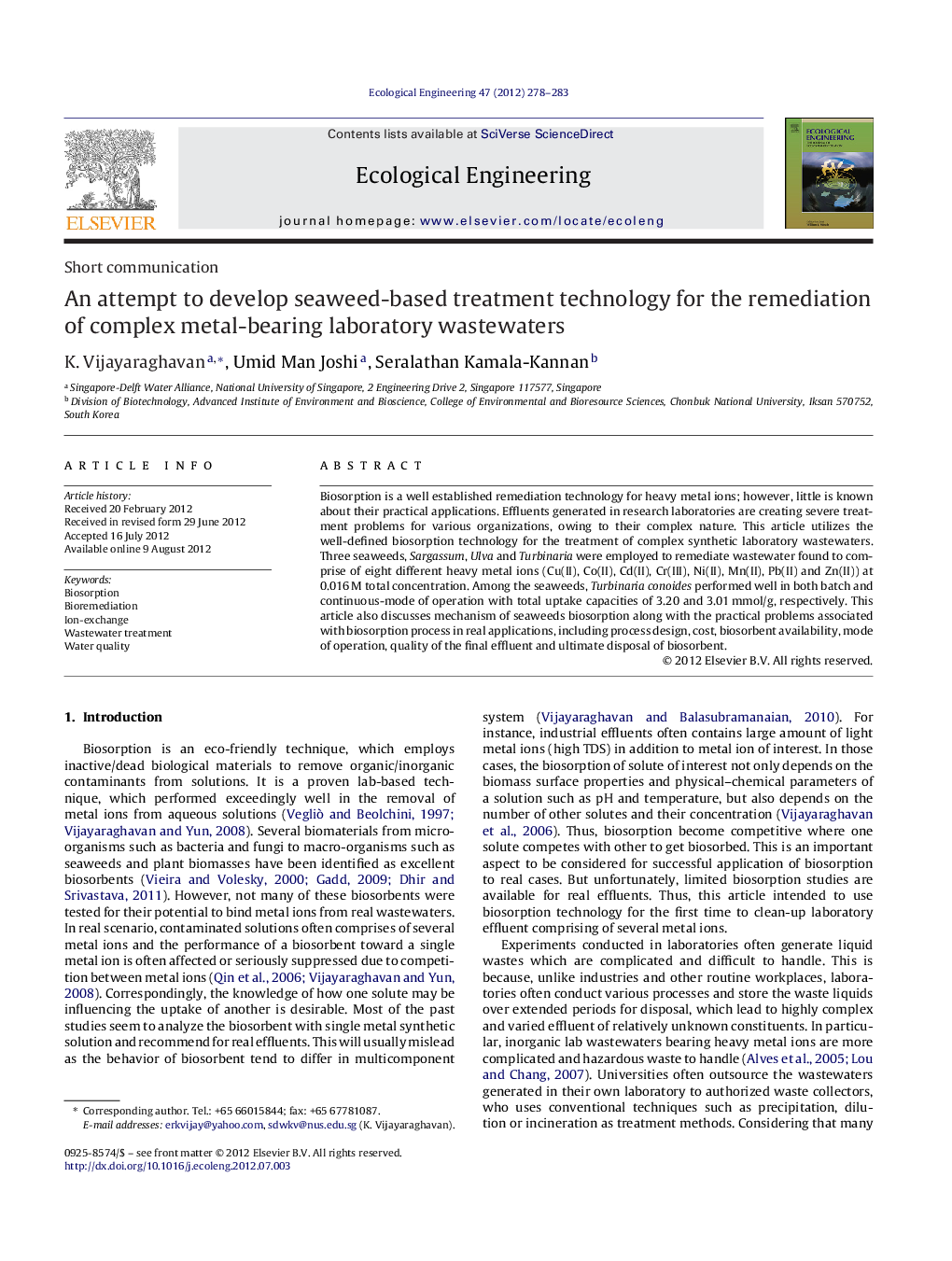| Article ID | Journal | Published Year | Pages | File Type |
|---|---|---|---|---|
| 4390031 | Ecological Engineering | 2012 | 6 Pages |
Biosorption is a well established remediation technology for heavy metal ions; however, little is known about their practical applications. Effluents generated in research laboratories are creating severe treatment problems for various organizations, owing to their complex nature. This article utilizes the well-defined biosorption technology for the treatment of complex synthetic laboratory wastewaters. Three seaweeds, Sargassum, Ulva and Turbinaria were employed to remediate wastewater found to comprise of eight different heavy metal ions (Cu(II), Co(II), Cd(II), Cr(III), Ni(II), Mn(II), Pb(II) and Zn(II)) at 0.016 M total concentration. Among the seaweeds, Turbinaria conoides performed well in both batch and continuous-mode of operation with total uptake capacities of 3.20 and 3.01 mmol/g, respectively. This article also discusses mechanism of seaweeds biosorption along with the practical problems associated with biosorption process in real applications, including process design, cost, biosorbent availability, mode of operation, quality of the final effluent and ultimate disposal of biosorbent.
► Biosorption technique was used to decontaminate laboratory effluent comprise of eight heavy metal ions. ► Brown and green seaweeds were examined in batch and packed column mode for heavy metal biosorption. ► Brown seaweed, Turbinaria conoides, removed most of the heavy metal ions and effectively reused for three cycles.
